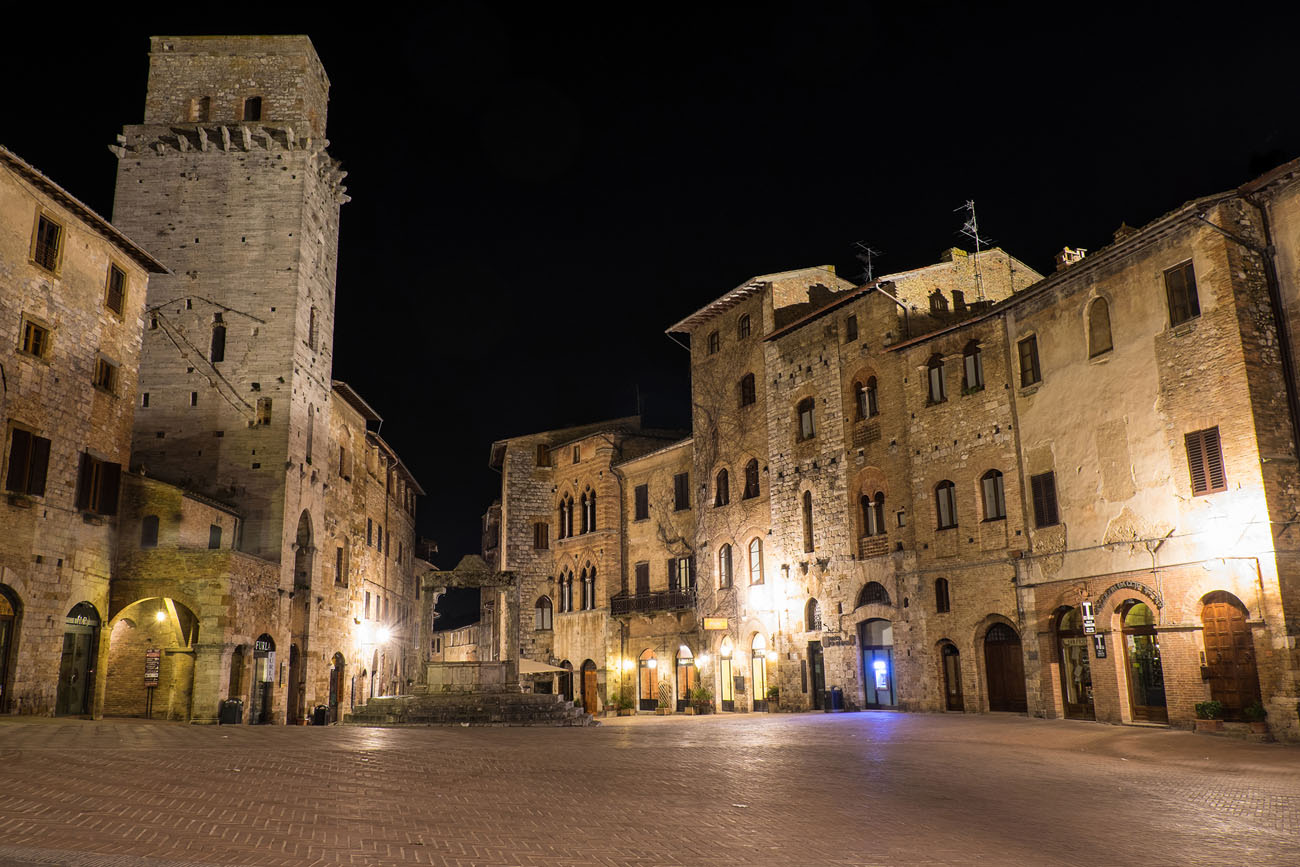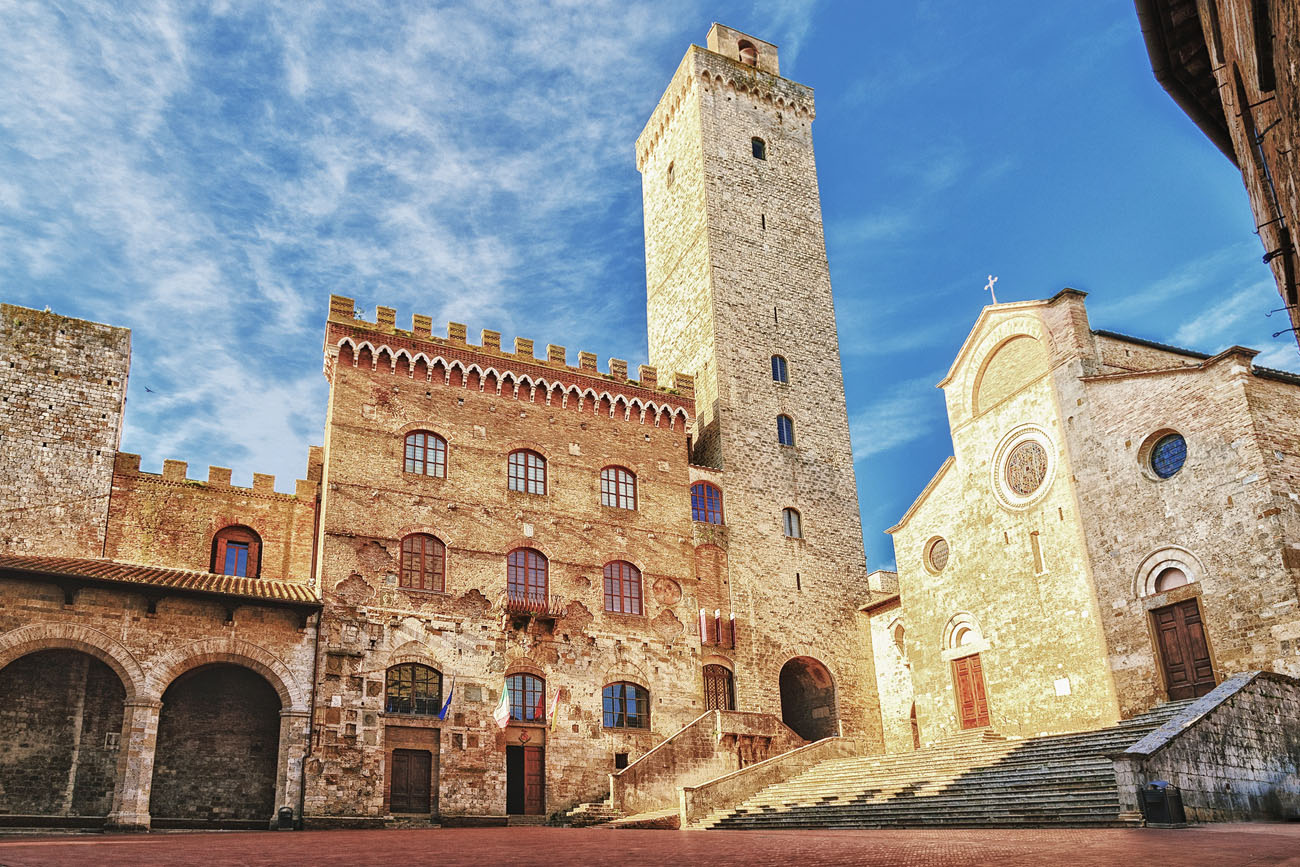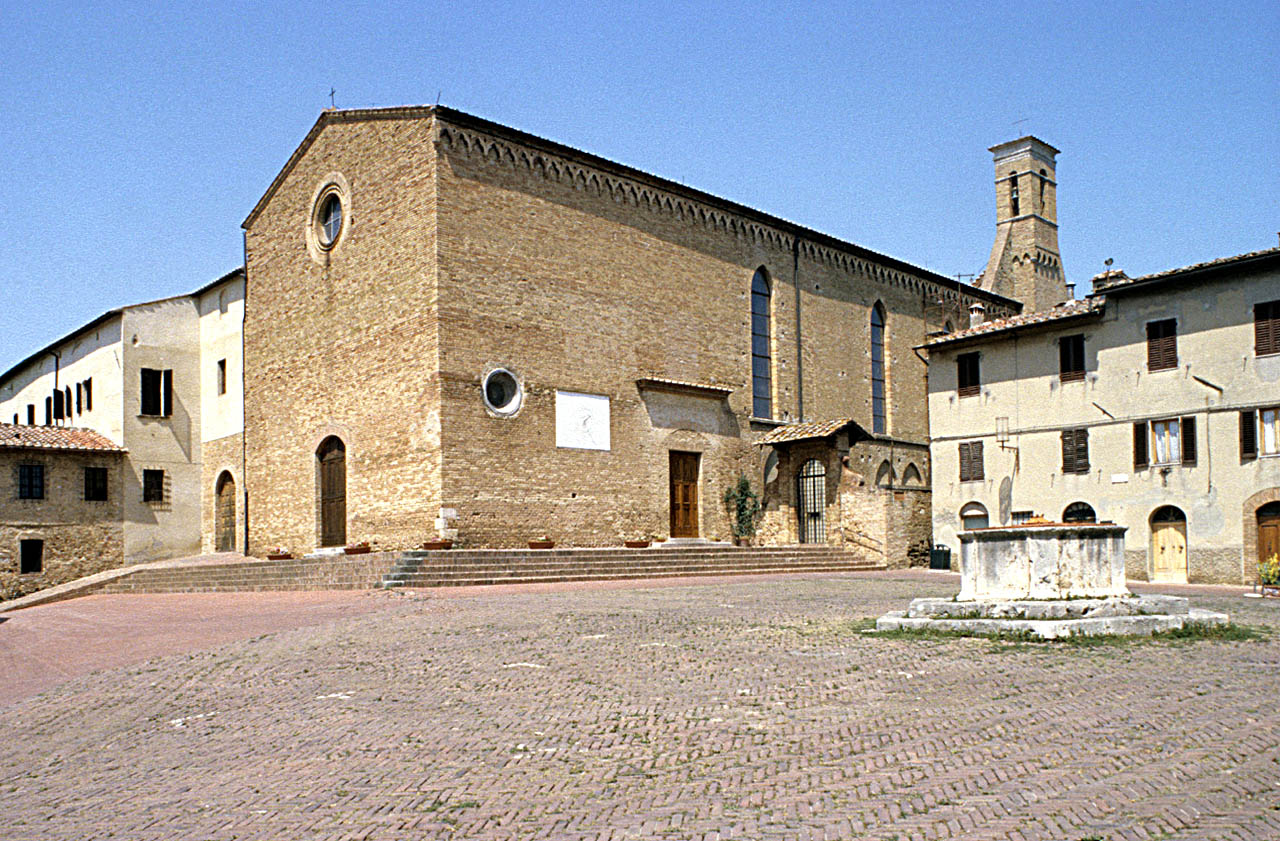San Gimignano – The Manhattan of the Middle Ages
Share
Even if you have little time, San Gimignano is one of the fundamental stages to do in Tuscany, a small city between Florence and Siena, world famous for its architecture characterized by numerous medieval towers, hence the nickname of the Manhattan of the Middle Ages. Today there are only 14 of the 72 towers belonging to the wealthy families, despite this the view of its skyline on the hill is a unique emotion.
Declared a World Heritage Site by UNESCO in 1990, the city offers an intact, well-maintained and touristically-organized historic center that welcomes both mass tourism with coaches and groups that visit it on a daily basis. The city, however, offers much more than just a quick visit, so the advice is to visit it calmly, especially during off-season or off-weekend periods, perhaps even tasting some of its typical products such as saffron or Vernaccia di San Gimignano.

Porta San Giovanni
The city is crossed from south to north by two main streets (Via San Giovanni and Via San Matteo) that join together in Piazza Duomo. Entering from Porta San Giovanni you go through the whole street of the same name where there is a wide choice of restaurants, bars and shops selling typical products, the advice is however to visit the city a little upside up admiring the splendid buildings and majestic towers.

Piazza della Cisterna
Going all along Via San Giovanni you arrive in Piazza della Cisterna, in the past it was the commercial center of the city where the shops were located and the market took place, it takes its name from the “cisterna” the octagonal well that is located in the center of the square. From the well located in the center of the square it is possible to admire the splendid tower-houses that surround it, perhaps taking a break and enjoying an excellent ice cream – in the square there are two excellent artisan ice-cream parlors.

Piazza del Duomo
From Piazza della Cisterna we enter Piazza Duomo directly, a splendid square overlooked by the Duomo with its staircase, in front of the cathedral is the Palazzo del Podestà (between the Torre Grossa and the Loggia del Comune), the civic symbol of San Gimignano.
The simplicity of the Romanesque façade of the Duomo (or Basilica of Santa Maria Assunta) is very different from the inside, where a structure divided into three naves is completely frescoed with masterpieces depicting the new and the old testament.
On the left of the Duomo a small road leads to the Rocca di Montestaffoli built to defend the city from attacks. From the Rocca it is possible to admire all the surrounding panorama of the city and the Valdelsa countryside.

Rocca di Montestaffoli
Continuing after Piazza Duomo, you enter Via San Matteo, the street that descends to the north gateway to the city (Porta San Matteo).
A tip for a quick snack if you like pizza is to stop in Via San Matteo by Riccardo at Ricca Pizza, “best pizza in Tuscany” according to my in-laws, a stop they make every time they come to visit us, tell Ricca that I send you 😉
We finish our journey coming from Porta San Matteo passing through the narrow Via Cellolese in Piazza Sant’Agostino. Often overlooked by the hurried visitor, the square and the church deserve a more careful visit, the square is very quiet, not very crowded, and it is possible to linger in peace. The church has frescoed vaults and numerous religious works.

Piazza e Chiesa di Sant’Agostino
Cose da vedere/fare:
Museums:
• Civic Museum
• Torre Grossa
• Museum of Sacred Art
• Museum of Torture
Eventi:
• San Silvestro tra le torri (Festa di fine anno)
• Carnevale di San Gimignano (carnevale con carri fra le torri) Gennaio-Febbraio
• Gran Fondo Internazionale della Vernaccia (gara ciclistica) Maggio
• Fiera delle Messi (rievocazione storico-medievale) Giugno
For information:
• San Gimignano Proloco: http://www.sangimignano.com
• Vernaccia di San Gimignano Wine Consortium: http://www.vernaccia.it
Marco Bruni
After attending the Cappiello Academy in Florence he has worked for over 17 years in communication and is passionate about travel, rugby and music.
He grew up in Colle di Val d’Elsa, lived in San Gimignano for over 12 years, and traveled for the last 20 years between Andalucia, the Middlands and Tuscany. You can often find him on his bike on the Via Francigena, between San Gimignano, Colle di Val d’Elsa and Monteriggioni.








